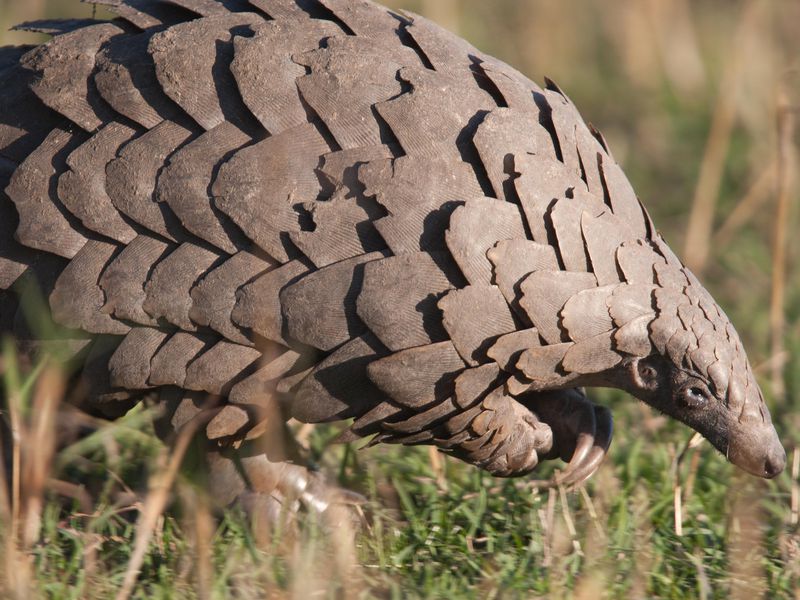The World's only Scaly Mammal
Pangolins are uniquely covered in tough, overlapping scales. These mammals eat ants and termites using an extraordinarily long, sticky tongue, and are able to quickly roll themselves up into a tight ball when they feel threatened. Eight different pangolin species can be found across Asia and Africa. Poaching for illegal wildlife trade and habitat loss have made these incredible creatures one of the most threatened groups of mammals in the world.
OVERVIEW
PHYSICAL CHARACTERISTICS
Pangolin species vary in size from about 1.6kg (~3.5 lbs) to a maximum of about 33kg (~73 lbs). They vary in color from light to yellowish brown through olive to dark brown. Protective, overlapping scales cover most of their bodies. These scales are made from keratin — the same protein that forms human hair and fingernails. Overlapping like artichoke leaves, the scales grow throughout the life of a pangolin just like hair. With small conical heads and jaws lacking teeth, pangolins have amazingly long, muscular, and sticky tongues that are perfect for reaching and lapping up ants and termites in deep cavities..
TAXONOMY & STATUS
There are six species of pangolins. All pangolins belong to the genus Manis in the family Manidae, which is the only family within the order Pholidota. Although pangolins share similar characteristics with Xenarthrans (anteaters, armadillos, and sloths), they are in fact more closely related to the order Carnivora (cats, dogs, bears, etc.).
DISTRIBUTION & HABITAT
Pangolins are found in a variety of habitats including tropical and flooded forests, thick brush, cleared and cultivated areas, and savannah grassland; in general they occur where large numbers of food (ants and termites) are found. Asian pangolins in particular are threatened by loss of habitat due to expanding agriculture and other human uses. Pangolins dig deep burrows for sleeping and nesting that contain circular chambers.
DIET
Pangolins live predominantly on a diet of ants and termites, which they may supplement with various other invertebrates including bee larvae, flies, worms, earthworms, and crickets. This specialist diet makes them extremely difficult to maintain in captivity—they often reject unfamiliar insect species or become ill when fed foreign food. Wild pangolins locate insect nests using a well developed sense of smell. Voraciously digging ants and termites from mounds, stumps, and fallen logs with their claws, they use their extremely long sticky tongues to capture and eat them.
BEHAVIOUR
Pangolins are solitary, most are nocturnal and highly secretive; thus it is difficult for scientists to study them in the wild, and many mysteries remain about their behavior and habits. Some pangolin species such as the Chinese pangolin sleep in underground burrows during the day, and others including black-bellied pangolins and Sunda pangolins are known to sleep in trees. They emerge in the evening to forage for insects. Pangolins are well adapted for digging: they dig burrows with their strong front legs and claws, using their tails and rear legs for support and balance.
REPRODUCTION & LIFESPAN
Male and female pangolins differ in weight; in most species, males are 10-50 percent heavier than females. Pangolins reach sexual maturity at two years, and most pangolins give birth to a single offspring, though two and three young have been reported in the Asian species. When born, pangolins are about six inches long and weigh about 12 ounces (0.75 lbs). Their scales are soft and pale, and begin to harden by the second day. Pangolin mothers nurture their young in nesting burrows.





